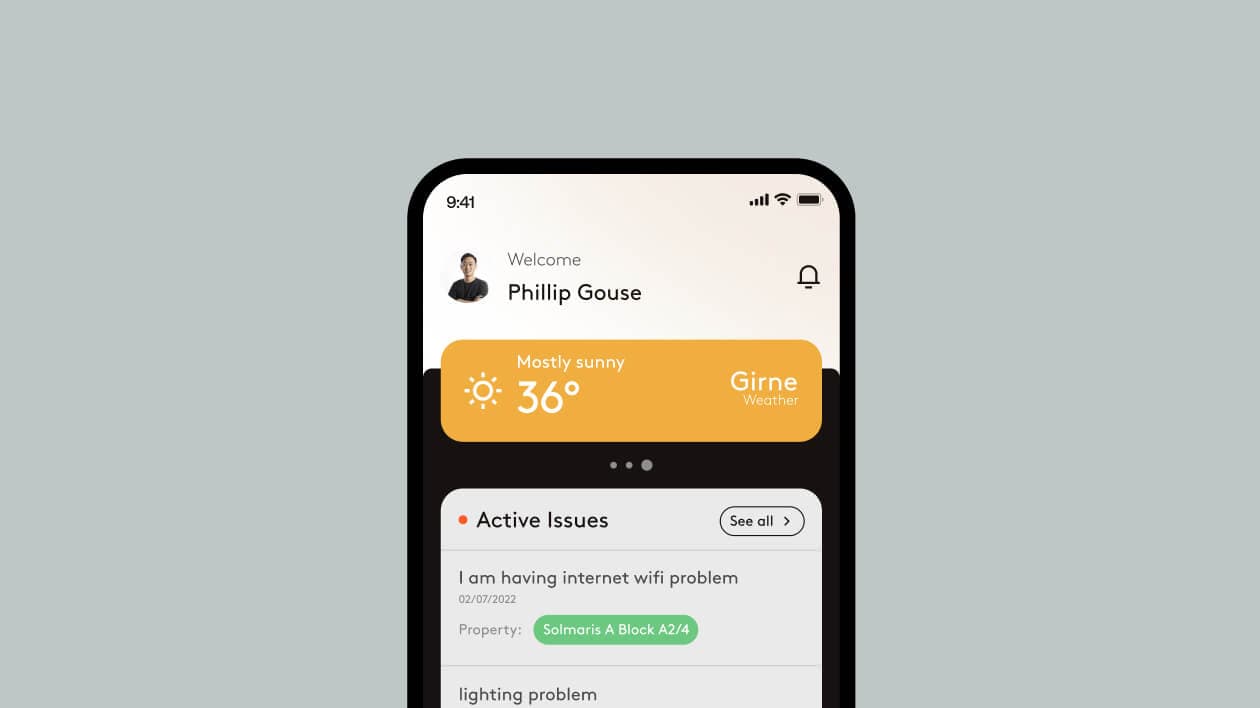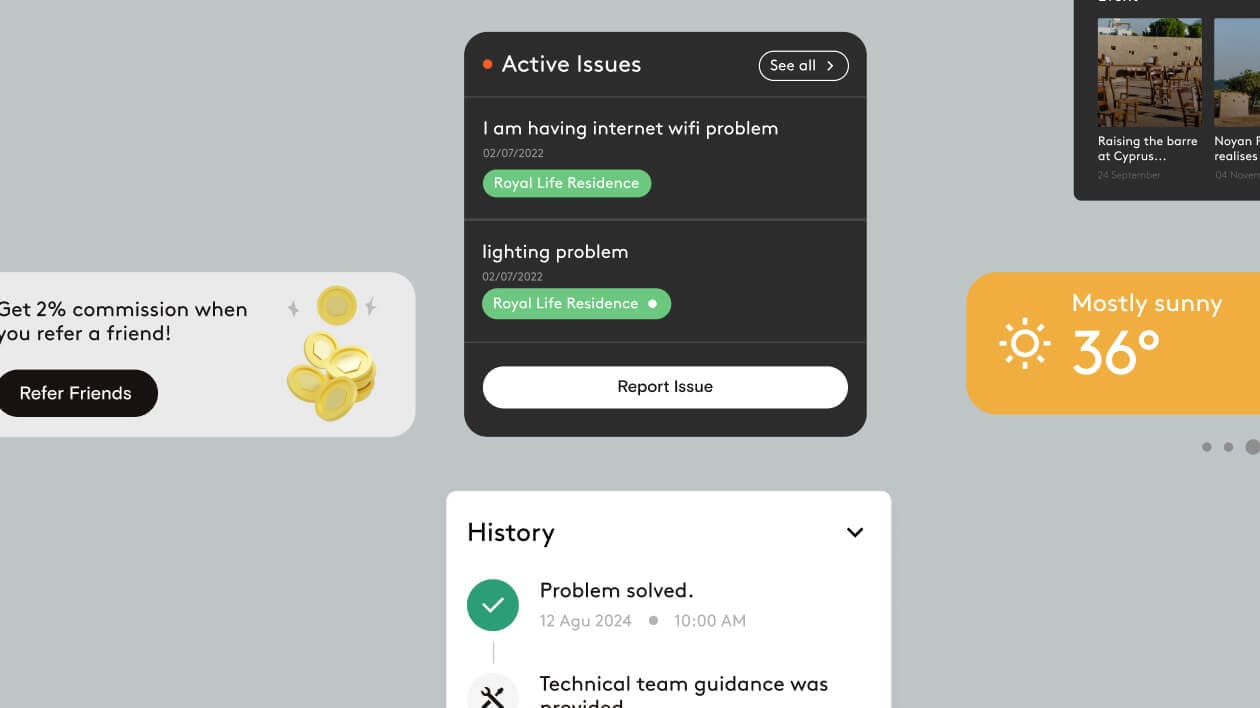Frontend Development
Bring your digital vision to life with our expert frontend development services. We craft stunning, user-friendly websites and web applications that deliver exceptional user experiences and drive business results. From responsive design to cutting-edge technologies, we're your trusted partner for building impactful online presences.
Agile Development Methodology
We embrace agile principles to ensure flexibility and responsiveness throughout the development process. We work in iterative sprints, allowing for regular feedback and adjustments, ensuring the final product meets your evolving requirements.
Collaboration and Communication
We believe in clear and open communication throughout the development process. We actively involve you in every step, providing regular updates, seeking your feedback, and ensuring you're fully informed every step of the way.
Cutting-Edge Technologies
We stay at the forefront of frontend technologies, leveraging the latest frameworks, libraries, and tools to build modern, performant, and scalable websites and web applications. We prioritize clean code, modular architecture, and best practices to ensure maintainability and future-proofing.
Performance Optimization
We prioritize website performance, ensuring fast loading times, smooth user interactions, and optimal search engine visibility. We employ various optimization techniques, including code minification, image compression, and caching, to enhance user experience and boost conversions.
Security and Reliability
We prioritize website security, implementing robust measures to protect user data and prevent vulnerabilities. We adhere to industry best practices and security standards to ensure your website is safe and reliable.
User-Centric Design
We prioritize understanding your target audience and their needs to craft intuitive and user-friendly experiences that drive engagement and conversions. We conduct thorough user research and analysis to ensure every design decision aligns with your business objectives and user expectations.
Design
We craft meaningful digital experiences that captivate and engage, blending creativity with strategy. From concept to execution, we make your brand stand out.
We shape distinctive brands that resonate, ensuring every element reflects your business’s core values.
Our branding process builds emotional connections, making your brand memorable and positioning it for long-term success in the market.
Website security is crucial for protecting user data and maintaining trust. Here are some key practices: * **Use secure protocols (HTTPS):** Implement HTTPS to encrypt data transfer between the website and users' browsers, ensuring secure communication. * **Keep software up to date:** Regularly update website software, including plugins, themes, and frameworks, to patch security vulnerabilities. * **Strong passwords and access control:** Enforce strong passwords for user accounts and implement access control measures to limit unauthorized access. * **Regular security audits:** Conduct regular security audits to identify and address potential vulnerabilities. * **Data encryption:** Encrypt sensitive user data, such as personal information and payment details, to protect it from unauthorized access.
Learning frontend development is a rewarding journey with a wide range of resources available: * **Online courses:** Platforms like Coursera, Udemy, and Codecademy offer comprehensive courses covering HTML, CSS, JavaScript, and frontend frameworks. * **Coding bootcamps:** Intensive programs that provide hands-on training and project experience in frontend development. * **Books and tutorials:** Numerous books and online tutorials offer detailed explanations and practical examples for frontend development concepts. * **Open-source projects:** Contributing to open-source projects allows you to learn from experienced developers and gain practical experience. * **Online communities:** Join online communities and forums to connect with other developers, ask questions, and share knowledge.
Selecting the right frontend development service requires careful consideration of your specific needs and project requirements. Factors to consider include: * **Experience and expertise:** Look for a service with a proven track record in frontend development, specializing in relevant technologies and industries. * **Portfolio and case studies:** Review the service's previous work to assess their design aesthetic, technical skills, and ability to deliver on promises. * **Communication and collaboration:** Choose a service that prioritizes clear communication, active listening, and collaborative working relationships. * **Pricing and budget:** Determine a service that fits your budget and offers transparent pricing structures. * **Project timeline and deadlines:** Ensure the service can meet your project deadlines and timelines effectively.
You may need frontend development services if you are: * **Building a new website or web application:** From scratch or redesigning an existing one. * **Improving the user experience of your website:** Making it more user-friendly, visually appealing, and engaging. * **Adding new features or functionality to your website:** Such as online forms, payment gateways, or interactive elements. * **Updating or modernizing your website:** To keep up with current trends and technologies. * **Facing challenges with website performance or security:** Requiring expert assistance to optimize or secure your website.
Avoiding common mistakes can lead to better website performance and user experience. Some common pitfalls include: * **Ignoring responsive design:** Failing to adapt websites to different screen sizes can result in poor user experience on mobile devices. * **Overusing JavaScript:** Excessive use of JavaScript can slow down website loading times and negatively impact performance. * **Poor code quality:** Writing messy or unorganized code can make websites difficult to maintain and update. * **Neglecting security:** Failing to implement security measures can expose websites to vulnerabilities and data breaches. * **Lack of accessibility testing:** Ignoring accessibility standards can exclude users with disabilities from accessing the website.
Frontend development encompasses a wide range of tasks, including: * **Designing and building website layouts:** Creating the visual structure and organization of web pages, including elements like headers, footers, navigation menus, and content sections. * **Implementing responsive design:** Ensuring websites adapt seamlessly to different screen sizes and devices, providing an optimal viewing experience across desktops, tablets, and smartphones. * **Developing interactive elements:** Adding interactive features like forms, buttons, sliders, and animations to enhance user engagement and improve usability. * **Integrating third-party tools and services:** Connecting websites with external services like social media platforms, payment gateways, and analytics tools. * **Optimizing website performance:** Ensuring websites load quickly and efficiently, improving user experience and search engine rankings.
Good frontend development is characterized by: * **Intuitive and easy-to-use interfaces:** Websites that are simple to navigate and understand, with clear calls to action. * **Responsive design:** Websites that adapt seamlessly to different screen sizes and devices, providing an optimal viewing experience. * **Fast loading times:** Websites that load quickly, reducing user frustration and improving engagement. * **Visually appealing and engaging design:** Websites that are visually appealing and reflect the brand's identity, capturing user attention and interest. * **Seamless integration with other systems:** Websites that integrate seamlessly with other systems, such as payment gateways, social media platforms, and analytics tools.
Frontend frameworks provide pre-written code and components that streamline frontend development, making it faster and more efficient. Some popular frameworks include: * **React:** A JavaScript library for building user interfaces, known for its component-based architecture and virtual DOM. * **Angular:** A comprehensive framework for building complex web applications, offering features like data binding, routing, and dependency injection. * **Vue.js:** A progressive framework that is easy to learn and use, ideal for both small and large projects. * **Svelte:** A compiler that converts code into highly optimized JavaScript, known for its performance and minimal runtime overhead.
Hiring the right frontend developer is crucial for building a successful website. Here are some tips: * **Define your project requirements:** Clearly outline the project scope, functionalities, and desired technologies. * **Review portfolios and case studies:** Assess the developer's experience, skills, and design aesthetic. * **Conduct technical interviews:** Evaluate the developer's technical skills and problem-solving abilities. * **Check references:** Reach out to previous clients to get insights into the developer's work ethic and communication style. * **Offer a clear contract:** Ensure a clear contract outlining project details, timelines, and payment terms.
Partnering with a frontend development service offers numerous advantages, including: * **Expert knowledge and experience:** Frontend developers possess specialized skills and experience in building high-quality, user-centric websites. * **Time and cost savings:** Outsourcing frontend development allows you to focus on your core business while experts handle the technical aspects. * **Improved website performance and usability:** Professional frontend developers prioritize user experience and website performance, resulting in faster loading times and intuitive navigation. * **Access to cutting-edge technologies:** Stay ahead of the curve with developers who are up-to-date on the latest frontend trends and technologies. * **Seamless integration with existing systems:** Frontend developers can ensure your new website seamlessly integrates with your existing backend systems and infrastructure.
Frontend development comes with its own set of challenges, including: * **Cross-browser compatibility:** Ensuring websites function correctly across different web browsers and versions. * **Responsive design:** Adapting websites to various screen sizes and devices while maintaining optimal user experience. * **Performance optimization:** Balancing website functionality with loading speed and performance. * **Security vulnerabilities:** Protecting websites from security threats like cross-site scripting (XSS) and SQL injection. * **Accessibility compliance:** Meeting accessibility standards to ensure websites are usable by everyone, including those with disabilities.
Frontend development services can be tailored to meet various needs, including: * **Website design and development:** Creating custom websites from scratch, including responsive design, user interface design, and content management systems. * **Web application development:** Building interactive web applications with advanced functionalities, such as online stores, social platforms, and dashboards. * **Frontend maintenance and support:** Providing ongoing support, bug fixes, and updates to existing websites and web applications. * **Frontend performance optimization:** Improving website loading speed, user experience, and search engine rankings. * **Accessibility and usability testing:** Ensuring websites are accessible to all users, regardless of their abilities, and are easy to use and navigate.
Frontend development is the process of creating the user interface (UI) and user experience (UX) of a website or web application. It involves using technologies like HTML, CSS, and JavaScript to build interactive and visually appealing interfaces that users interact with. Think of it as the front-facing part of a website, what users see and experience directly.
Websites and web applications are both online platforms, but they differ in their functionality and purpose: * **Websites:** Provide static content, such as text, images, and videos, designed for information sharing, marketing, or branding. Examples include blogs, news sites, and company websites. * **Web applications:** Offer interactive functionalities, allowing users to perform actions and tasks online, such as shopping, booking appointments, or managing data. Examples include online stores, social media platforms, and project management tools.
Frontend and backend development are two distinct but interconnected aspects of web development: * **Frontend development:** Focuses on the user interface and user experience of a website, what users see and interact with. It involves technologies like HTML, CSS, and JavaScript. * **Backend development:** Handles the server-side logic, data storage, and functionality of a website. It involves technologies like Python, Java, and Node.js. Think of frontend development as the visible part of an iceberg, while backend development represents the hidden foundation beneath the surface.
Frontend development is constantly evolving with new technologies and trends emerging. Some key areas to watch include: * **Artificial intelligence (AI):** AI-powered features, like chatbots and personalized recommendations, are becoming increasingly common in frontend development. * **WebAssembly:** A technology that allows developers to run code written in languages like C++ and Rust in web browsers, enhancing performance and efficiency. * **Progressive web apps (PWAs):** PWAs combine the best of websites and mobile apps, offering offline functionality and push notifications. * **Augmented reality (AR) and virtual reality (VR):** AR and VR technologies are opening up new possibilities for immersive user experiences on websites and web applications. * **Accessibility and inclusivity:** Accessibility and inclusivity are becoming increasingly important, with developers focusing on building websites that are usable by everyone.
Frontend development typically follows a structured process, including: 1. **Planning and requirements gathering:** Defining project goals, target audience, and website functionalities. 2. **Design and wireframing:** Creating visual mockups and wireframes to outline the website's structure and layout. 3. **Development and coding:** Implementing the design using HTML, CSS, and JavaScript, building the website's functionality. 4. **Testing and debugging:** Ensuring the website functions correctly and meets performance standards. 5. **Deployment and launch:** Making the website live and accessible to users. 6. **Maintenance and updates:** Providing ongoing support and updates to keep the website secure, performant, and aligned with evolving user needs.
A frontend developer is responsible for creating the visual and interactive elements of a website or web application. Their key responsibilities include: * **Designing and developing user interfaces (UIs):** Creating visually appealing and user-friendly layouts, including elements like buttons, forms, and navigation menus. * **Implementing responsive design:** Ensuring websites adapt seamlessly to different screen sizes and devices, providing a consistent experience across desktops, tablets, and smartphones. * **Writing code using HTML, CSS, and JavaScript:** Building the website's structure, styling, and interactive elements. * **Testing and debugging code:** Ensuring the website functions correctly and meets performance standards. * **Collaborating with designers and backend developers:** Working closely with other team members to bring website designs to life and integrate with backend systems.
User experience (UX) is a critical aspect of frontend development, focusing on creating websites that are easy to use, enjoyable, and engaging for users. UX considerations include: * **Usability:** How easy it is for users to navigate and find information on the website. * **Accessibility:** Ensuring the website is accessible to all users, regardless of their abilities. * **Visual design:** Creating a visually appealing and consistent design that reflects the brand and target audience. * **Content strategy:** Organizing and presenting content in a clear and concise manner. * **User feedback:** Gathering and incorporating user feedback to improve the website experience over time.
Frontend development relies on a combination of programming languages, frameworks, and tools, including: * **HTML (HyperText Markup Language):** The foundation of web pages, defining the structure and content of a website. * **CSS (Cascading Style Sheets):** Controls the visual presentation of web pages, including colors, fonts, layouts, and animations. * **JavaScript:** A scripting language that adds interactivity and dynamic behavior to websites, allowing for user interactions, data manipulation, and complex animations. * **Frontend frameworks:** Libraries of pre-written code that streamline frontend development, offering reusable components and functionalities, such as React, Angular, and Vue.js. * **Development tools:** Tools like code editors, debuggers, and version control systems help developers write, test, and manage code efficiently.

















